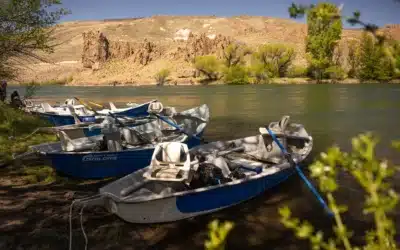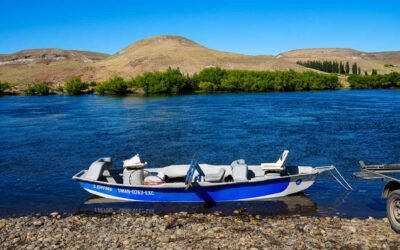In our last blog, we explained some of the basics about fly fishing in Patagonia: what kind of fishing we do, what type of fish species we fish for, and the best time of the year to come fishing with us.
Read: Fly Fishing in Patagonia: how, what for and when?
In this second blog, we’re going to explain a little bit about the type of equipment we use to fish in Patagonia, the fishing techniques our expert guides will help you to perfect to fly fish in Patagonia successfully, and how to get to Patagonia to fly fish with us.
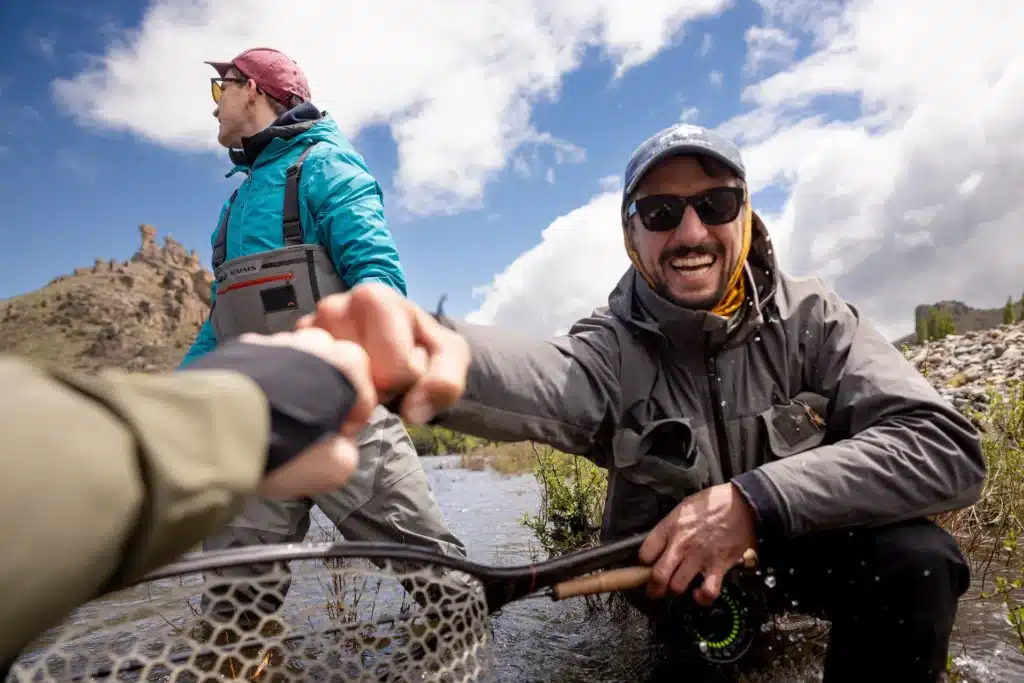
What equipment do you need for fly fishing in Patagonia?
Luckily for our guests, we provide you with all the kit you need to fly fish in Patagonia. Normally, we like to fish with a 6wt rod and a floating line. For streamer fishing, we also use sinking lines. The 6wt is the best all-rounder rod for dries, nymphs and streamers, which makes it easier to cast with big flies or against the famous Patagonian winds…
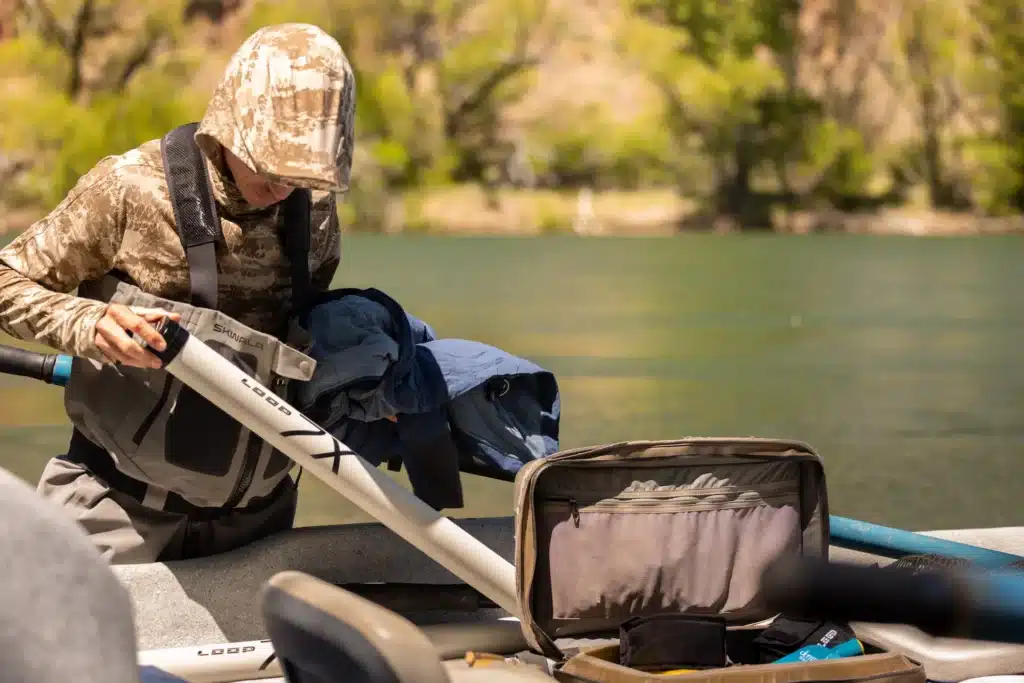
We also like to use 4wt rods when fishing with smaller dries in low winds. At the other end of the spectrum, some of the big rivers like the Limay are best fished with a 7et or 8wt rod since we are often fishing with a larger fly or a heavy sinking line. In the right conditions we also use Spey rods, helping to make those long casts from the bank or boat much easier. Leaders normally go from 0x7ft to 4x12ft, and we add tippet as needed going down to 6x in the case of a very fine fly. We provide our guests with top class Loop rods and reels, and premium lines and flies.
In terms of clothing, we always recommend packing your waders and boots. Even if you’re spending a hot day floating, you never know when you’re going to reach the perfect spot to get out the boat and wade fish. A pair of wading socks is also a great idea, to allow you to wet wade with just your socks and boots if the weather means waders aren’t necessary.
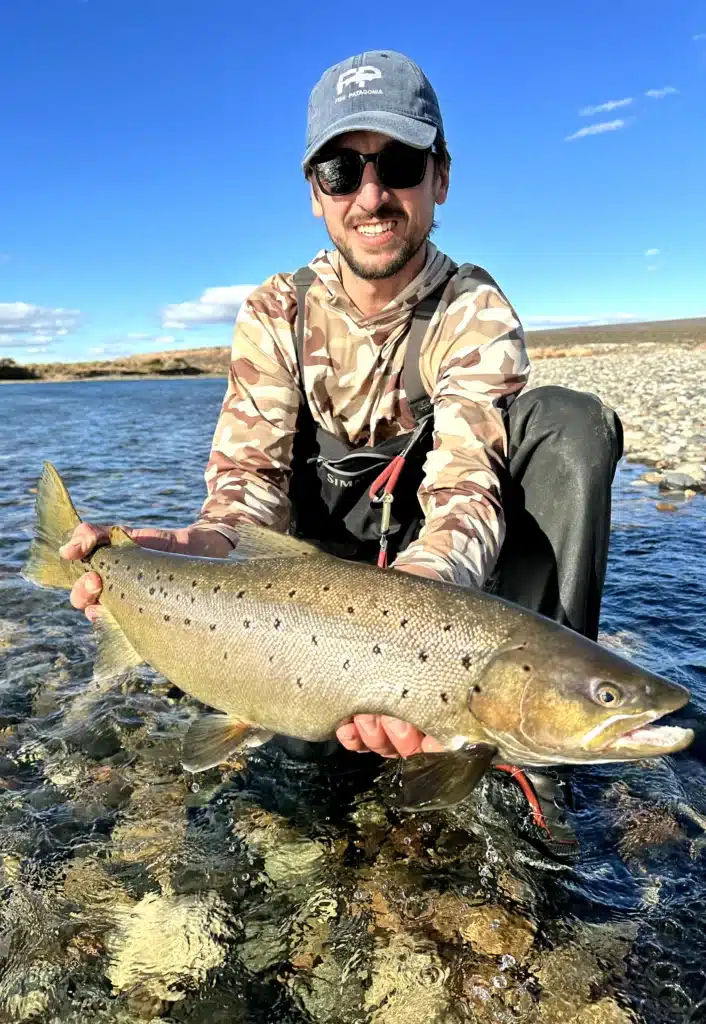
Don’t underestimate the sun down here: long sleeve shirts and fishing gloves are vital protection on long summer days, along with a hat or cap and a buff. We love sun shirts with hoods. Having said that, in Spring and Autumn, or even in the middle of summer (never a dull moment in Patagonia) the weather can turn fast: always pack a fleece or a down jacket, and a waterproof outer layer.
All of our guests are welcome to use our Simms boots and waders, and are also provided with waterproof drybags to store their personal belongings safely for the day and Fishpond burrito wader bags to carry their kit safely to and from their day’s fishing.
What techniques do you use for fly fishing in Patagonia?
We deploy a huge range of techniques to fly fish in Patagonia. We can fish anything from a long leader with a tiny dry fly, to a 14ft spey rod with a big streamer and everything in between.
We are big fans of dry flies, but when conditions aren’t perfect we find that fishing with a big dry and a dropper works wonders. The dropper can be a small or a big nymph, with a tungsten bead and a jig hook or just a lightly dressed fly with no weight. If we’re looking to catch big fish, streamer fishing is always a great option, especially when the water is cold. We also use a lot of terrestrial imitations all season: hoppers, beetles and ants are great options when there aren’t so many hatches around.
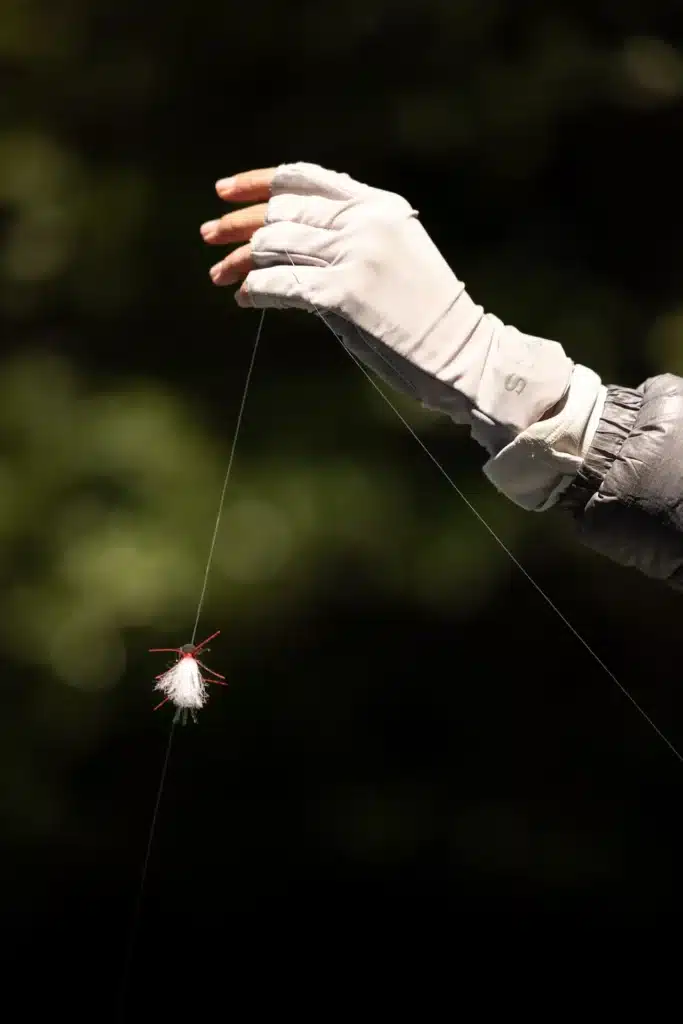
When it comes to casting, it goes without saying that the more casts you have in your repertoire the more success you’re likely to have. Having said that, shorter casting methods tend to work better in Patagonia, as the often heavily tree lined banks mean longer casting is impossible when we’re casting from or near to the banks.
Particularly useful casts include a roll cast, which allows you to cast even when very close to trees or bushes without getting entangled as it involves no backcasting. Similarly, a reach cast is a must when fish are rising. Double hauling is another very useful skill in Patagonia: when you do have space to backcast, this technique allows you to throw longer casts, and also helps with casting into the wind.
Where to fly into Patagonia to go fishing?
If you are travelling internationally, the easiest way to reach us in Patagonia is to fly into Buenos Aires. From there, it’s a quick and easy 2 hour flight to our closest airport San Martín de los Andes. Bariloche airport is another option, which is a few hours drive from San Martín, but often has more regular flights from Buenos Aires. It may also be the best option if you are starting or ending your trip at one of our partner lodges which is closer to Bariloche.
Once in San Martín de los Andes, you can be as close as a fifteen minute drive to some of our lodges.
Conclusion
This blog should have given you some useful information when it comes to techniques and equipment used to fly fish in Patagonia, and also to explain how to get down to Patagonia to fly fish with us.
We hope it’s been helpful! As ever, feel free to contact us if you have any questions at all, or are ready to book your trip of a lifetime in Patagonia.

